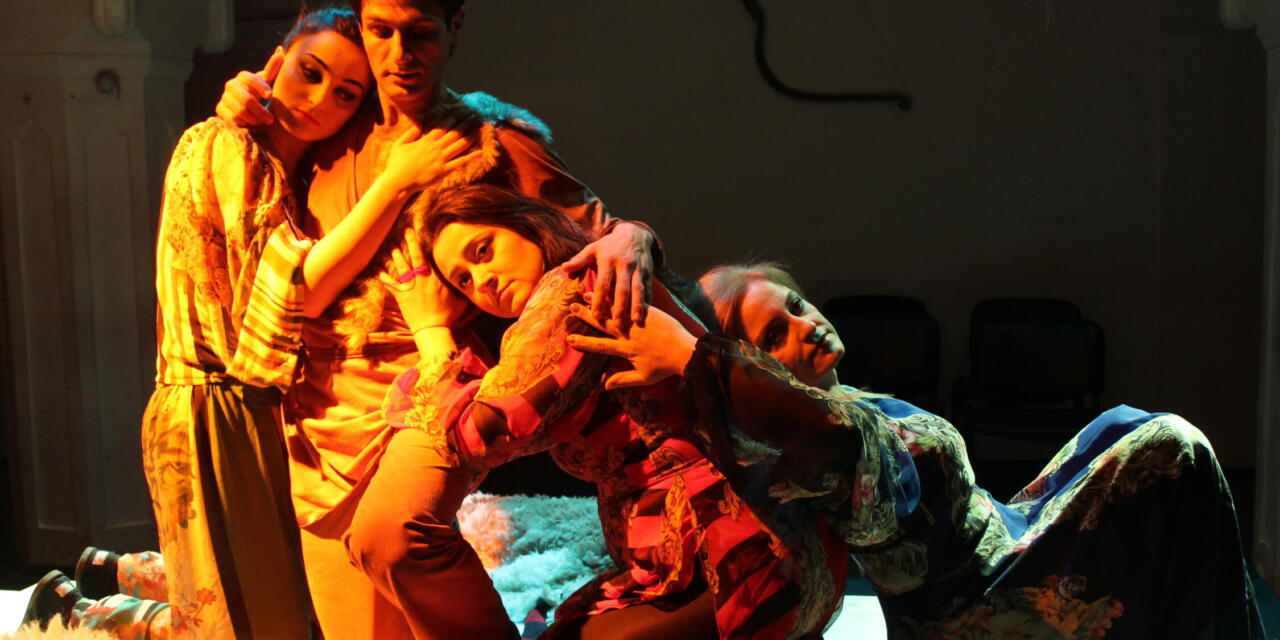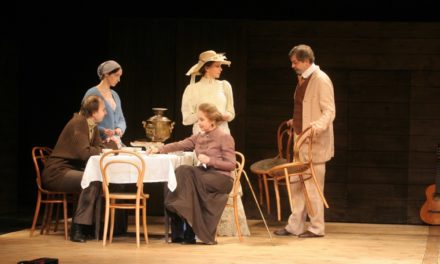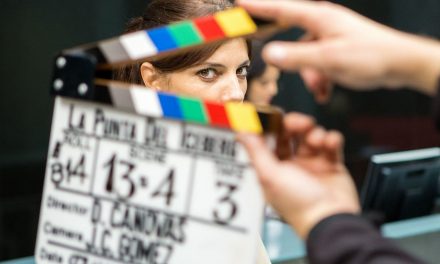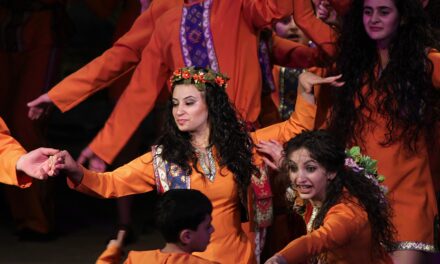The term of ritual has always been an object for endless discussions amongst theologians, cultural theorists, anthropologists, psychologists, philosophers, etc. Many myth theorists looked to ritual as a description of the religion. But recently, some symbolic anthropologists, for example, W. Robertson Smith or Clifford Geertz, have found the ritual to be fundamental to the dynamics of culture. Theoretical descriptions of ritual generally regard it as action and thus automatically distinguish it from the conceptual aspects of religion, such as beliefs, symbols, and myths. William Robertson Smith (1846-1894) systematized the myth-ritual relations. He declared that myth just serves for interpretation of ritual and therefore, it has secondary value, so ritual has got primary importance. Because the ritual had a clear and exact form, but the myth was changing, the ritual was an obligatory part of religious life, but belief in myth depended on one’s will. It would be quite interesting to plunge into the theoretical patterns and descriptions of ritual given by Edward Shils, Emile Durkheim, Marcel Griaule, Claude Levi-Strauss or Victor Turner. But in theatre practice, every director could and has to choose himself the theory suitable for his approach in the process of creating the performance.
It’s obvious, that in every cultural field of every nation, the theatre came out from religious ceremonies and rituals. Nevertheless, in some historical periods and forms of those societies theatre had to carry out different functions, such as entertainment of noblemen in the royal palace or ordinary citizens in the streets, enlightenment or education of illiterate and ignorant people, encouraging the same people to make revolutions, to be a platform, a tribune for political declarations and slogans, showing usual or very funny scenes of life or historical events, and thus it had become a traditional theatre. And at each of those periods the theatre moves away from its basic path and mission – being an inexhaustible source for his spiritual and inner life, no matter that it seems so pathetic.
It sounds like a cliché, but the differences between European, i.e. Western and Eastern theatres lays exactly at that level. Because from the beginning of the Western Theatre, which roots based on Ancient Greece Theatre, from performances, shown in Dionysian festivals, the barrier between spectators and actors became more and more visible. European drama came alive for the second time in the Christian Middle Ages. Once again, it grew out of cult origins. The medieval religious play originated in the liturgy of the Easter Mass. The medieval religious plays were not – unlike Greek tragedy and the Renaissance drama which followed them – individual creations. It is more accurate to describe them as works, which were created in a production process determined by a collective, even if they were sometimes reworked by an individual, though not always named, authors. After centuries of domination of dramaturgy in Europe theatre, where the playwright was an undeniable author of performance and in the post-dramatic period it began to return to ancient roots.
But in the East, the theatre always was something more important than a simple entertainment show. It’d be useful to consider Chinese Opera, Noh, and Kabuki Theatre of Japan in that aspect to be assured that all of those theatre styles are common in one very significant and solid structure. Particularly in Japanese theatre, there is a balance between the ritual and playing, acting in performance.
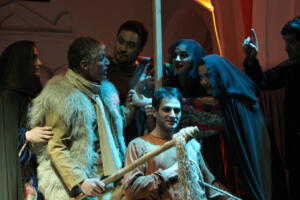
BOY. PC: press photo.
And narration here consists only upper layer, which plays the role of presentation for logical perception by spectators. At the same time under that layer, there is for most of the viewers a very close, very hidden, but important layer on the spiritual level. That is the reason why all of those performances could keep the interest not only of spectators, but a number of theatre practitioners in West countries, such as Richard Schechner, Jerzy Grotowski, Peter Brook, etc. For instance, Christopher Innes, a professor at York University in Ontario, after examining the development of avant-garde theatre from its inception in the 1890s toward the present day exposes a central paradox of modern theatre. He described the motivating force of theatrical experiments as a primitivism. In his opinion, the common link for works of theatre practitioners and theorists, such as August Strindberg, Antonin Artaud, Peter Brook, Ariane Mnouchkine, Heiner Müller, Robert Wilson, Eugenio Barba, Jerzy Grotowski, and Sam Shepard, was a desire to find ritual in archaic traditions and realize them on and through the stage.
Jerzy Grotowski thought about the crisis of theatre as a part of a common cultural crisis and as the result of the disappearance of holy and ritual functions of the theatre. He considered the modern theatre as a product of meetings of so-called educated people: some of them are engaged in the composition of words, gestures, preparation of decorations, and others, who know that they, as very educated people, have to visit the theatre. Both sides assemble in one place, but there wasn’t a live contact communication, and both sides are captured by the common convention that every distinguished person must be in theatre and watch a performance. And the live contact is replaced by a stereotype for spectators that they’re participating in the performance emotionally with their reactions to any event that occurred on the stage with invisible, rather visible from their side fourth wall. Therefore, Grotowski thought that if the theatre came out from primitive rites, then returning to ritual, where actors and spectators would take part and it would be possible to reconstruct the ceremony of live communication and active participation. Actually, some of those conditions have been met in the interactive theatre styles. Grotowski considered primordial, fundamental theatrical spontaneity as the way, leading toward the live theatre, to revive the mystery of the theatre.
Shabih-Khani is a mysterious ritual and is very familiar to Azerbaijan, alongside shebede, mesheke, meskhere, yug, etc. Perhaps, for people in modern society, this performance could be been seen as not luxury as they used to see in classical theatre buildings. But Shabih can be considered not only as a religious performance. Perhaps, it was one of the first experiences of directing – the person, who organized the casting of actors, props – shabihgerdan.
Despite the fact that professional theatre was established in Azerbaijan by the end of the 19th century, in the performing arts field there are a number of examples that kind of approaches to making a performance with ritual underlying structure. One of them is YUG Theatre, which has been practicing different methods in preparing performances by using the experiences of the most distinguished directors and adding its own style of directing and acting technique. Here director and first of all, the actors carry out the roles of moderators in an interactive mode, very close to spectators not only in terms of distance. One of that examples could be the performance of BOY (playwright Tarlan Rasulov), based on world myths, where it was used as a structure of some kind of ritual of initiation. Also, there was the experience to create construction within the performance as a scheme for actors. The performances using this method of director-actor work are characteristic of Azerbaijan’s independent first interactive dOM theatre.
The new level for the development of this style is making a new technique in the performance. Because with all new methods of directing, design, and places for performances, acting techniques haven’t changed in principle. Of course, in interactive theatre actors use communication with spectators for presenting live and more persuasive performances. But anyway, the actor has to take words, that don’t belong to him and learn and adopt them to present the person, which he is not. A new acting technique should exhibit a new kind of actor and creator, who doesn’t depend on plot, props, and other details, linked in the process of modern performance. I named it “spontaneous acting”, which is very similar to artistic improvisation. But there’s a huge difference between improvisation and spontaneous acting. What is the exact definition of improvisation? Improvisation is, therefore, to be understood as a combination of elements that were extensively prepared, yet frequently extended and enriched by the ideas and inspirations of the very moment. Improvisation is a way for actors to feel that liberation from the hard structure of the stage. Spontaneous acting will give an actor absolute power on the stage and he’ll become, as Grotowski declared, A Holy Actor.
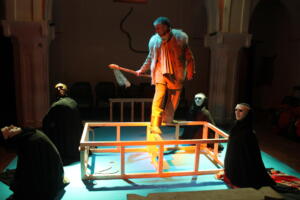
BOY. PC: press photo.
Bibliography
Anarina, Nina. History of Japan Theatre. Moscow: Natalis, 2008
Bell, Catherine. Ritual Theory, Ritual Practice. Oxford: University Press, 2009
Fifty Key Theatre Directors. Edited by S. Mitter, M. Shevtsova. New York: Routledge, 2005
Fischer-Lichte, Erika. History of European Drama and Theatre. New-York: Routledge, 2002
Fischer-Lichte, Erika. Aesthetic of Performance. Moscow: Play&Play, 2015
Grotowski, Jerzy.
Innes, Christopher. Avant Garde Theatre. New-York: Routledge, 2005
Rahimli, Ilham. History of Azerbaijan Theatre. Baku: Çaşıoğlu, 2005
This post was written by the author in their personal capacity.The opinions expressed in this article are the author’s own and do not reflect the view of The Theatre Times, their staff or collaborators.
This post was written by Tarlan Rasulov.
The views expressed here belong to the author and do not necessarily reflect our views and opinions.

